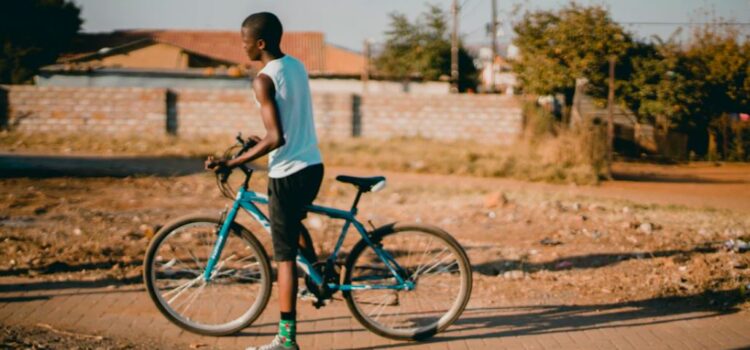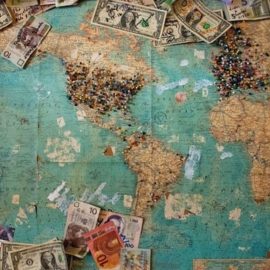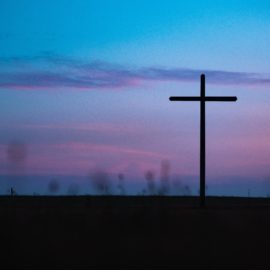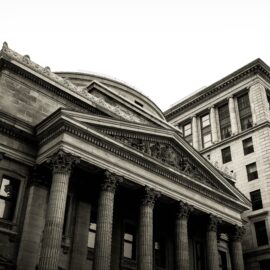

This article is an excerpt from the Shortform book guide to "Becoming" by Michelle Obama. Shortform has the world's best summaries and analyses of books you should be reading.
Like this article? Sign up for a free trial here .
In what ways did Michelle Obama experience racism growing up? What lesson did Michelle learn from her Grandpa Dandy?
For the first few years of her life, Michelle Obama wasn’t aware of racism because she grew up in an inter-racial community. It wasn’t until she was a little older that she and her brother were faced with racism first-hand. Michelle realized that some people were treated differently because of the color of their skin.
Keep reading for more information about Michelle Obama and growing up with racism.
Michelle’s First Encounter With Racism
For the first few years of her life, Michelle Obama didn’t grow up with racism. In Michelle’s racially mixed neighborhood, children played together without regard to color. But she soon learned her first lesson in discrimination. When her older brother, Craig, was a young boy, he received a new bike as a present. As he rode his bike near Lake Michigan, a police officer stopped him, assuming that this young Black boy must have stolen the shiny, new bike. Craig insisted that the bike was his, and the officer called his mother.
Of course, Craig and Michelle’s mother was furious at the officer, who happened to be a Black man. She made him apologize to Craig. She then explained to both Craig and Michelle that the color of their skin would sometimes create problems for them, and it was something they would have to learn to deal with.
Racial Discrimination in the Suburbs
Michelle also encountered racial discrimination when visiting friends in the suburbs. White families and some of the more well-off Black families were moving out of the aging South Shore neighborhood to newly constructed communities.
When the Robinsons’ close family friends, who were very light-skinned Blacks, moved to the suburbs of Park Forest—a mostly white community—they invited the Robinsons to come see their new home. The Robinsons spent an enjoyable day visiting with their old friends. At day’s end, they walked out to the street where their Buick was parked and found a deep scratch running from the driver’s door all the way to the back bumper. The scratch looked like it had been made by someone with a key or a rock—someone who wanted to deliver an unfriendly message to a Black family in a mostly white neighborhood.
The Robinsons were shocked and hurt, but they didn’t respond with drama. Instead, they drove home quietly. Michelle’s dad, who never complained or made a big deal about anything, simply drove his Buick to the auto body shop to have the scratch removed.
Michelle’s mother later wondered whether the Robinsons visit had “outed” their light-skinned Black friends. Perhaps their visit caused the neighbors to suddenly notice the family’s Black skin. Or perhaps the neighbors thought having one Black family in the neighborhood was okay, but they didn’t want more Black people to move in.
Introduction to a History of Discrimination
A few years later, Michelle had another encounter with racism. Michelle loved her uncles but she was bothered by Grandpa Dandy’s bad temper until she learned the source. He shouted at the television and at his wife, Michelle’s grandmother, a meek and devout Christian woman who managed a Bible bookstore. Michelle, who had an inner fierceness, was mystified by her grandmother’s passivity in the face of his verbal abuse. Since no one else would speak up, Michelle sometimes confronted Dandy when he berated her grandmother.
Michelle’s parents tried to explain Dandy’s anger: He was bitter from a hard life of disappointments and discrimination. He moved to Chicago as part of the Great Migration during the Depression, when six million southern Black men moved to northern cities to look for jobs. At the time, it was hard for everybody to find work, but even harder for Black people because factory managers preferred to hire European immigrants over American Blacks.
Dandy couldn’t get a union card because he was Black, which foiled his plan to become an electrician. So he worked as a handyman and did other odd jobs. This story repeated itself among several men in Michelle’s family: Michelle’s maternal grandfather, a carpenter, couldn’t work for a reliable construction firm because he wasn’t eligible for a union card. Her great-uncle Terry also couldn’t get a union card, so he gave up searching for work as a plumber and became a Pullman porter, a “traditional Black man’s job.”
Dandy abandoned his plans to attend college because he couldn’t afford it. Eventually, he became a postal worker. He was overqualified, but at least he had a steady job. After 30 years, he retired with a pension. He and his wife raised a family of accomplished children—one received an MBA from Harvard, another became a train engineer, another became a teacher. But Dandy never got over being angry and bitter about his forfeited dreams.
Reflection
Thinking back about her grandfather, Michelle considers how America’s systemic racism cast aside many intelligent, hardworking men and took a huge toll on their families. Because the men were denied access to higher-paying jobs, it meant they couldn’t buy their own homes, save money for retirement, or send their children to college. And being pushed down because of the color of their skin had an even more insidious effect—it encouraged them to resent and mistrust the world.
Discovering Her Own Black Identity
Michelle knew from a young age that her friends and cousins saw her as a curiosity, someone who didn’t fit their familiar mold. At a family gathering, one of her distant cousins asked her why she talked “like a white girl.” It was part insult and part genuine interest, and it made Michelle self-conscious about the formal English her parents and grandparents had taught her to speak.
She understood that her diction wasn’t like that of her peers—for example, in the Robinson family, “ain’t” was a forbidden word. She knew that she had grown up in a different kind of household—one in which the library, literature, and the Encyclopedia Britannica were revered.
Michelle didn’t know how to respond to her cousin’s accusatory question. She felt torn between two worlds, wanting to fit in with her peers but knowing that her parents had taught her to speak in a more refined manner. She wasn’t yet old enough to know why, but she knew her parents’ reverence for proper English had value.
Reflection
Looking back on this childhood conversation, Michelle notes that at the time, she still had a long way to go before finding her true voice and becoming comfortable with who she was. She had to learn that there was more than one Black identity and more than one way for a Black person to speak or think. She reflects that the delta between where she came from and where she wanted to go was too vast and impossible for a young girl to comprehend.
She also notes that a similar conversation took place 30 years later when she and Barack were campaigning for President. Some people—both Blacks and whites—criticized the couple’s way of speaking and living as “denying their culture.” Others simply didn’t know what to make of them, especially Barack, an Ivy League-educated Black Hawaiian whose mother hailed from Kansas. Some voters mistrusted him because he didn’t fit any established stereotype.

———End of Preview———
Like what you just read? Read the rest of the world's best book summary and analysis of Michelle Obama's "Becoming" at Shortform .
Here's what you'll find in our full Becoming summary :
- How Michelle Obama went from the South Side of Chicago to the White House
- Why much of her success came from her being determined from a young age
- How Michelle Obama continues to push herself and discover new opportunities






